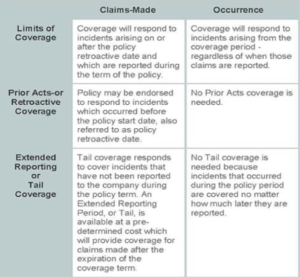Myth Busted: Entrepreneurs are NOT actually risk takers

Entrepreneurs are often mislabeled as “risk takers,” while in reality the most successful ones make calculated and mindful decisions. This sense of purpose and deliberation comprise a few of the qualities that differentiate successful entrepreneurs from the average risk taker.
A risk takers’ biggest mistake is depending too much on chance. Too often, they lay everything on the line, and thus significantly fail, sometimes without the means to pick themselves back up.
In our experience, the difference between a risk taker and an entrepreneur is that the latter create innovative ways to reduce risk. In fact, they actively avoid risk and are dedicated to planning every small step to achieve their goals.

Tell-Tale Qualities of a Successful Entrepreneur
Here’s a cohesive list of characteristics that make an entrepreneur successful:
- Ambition. They are always on the lookout for the next inspiration
- Effective manager of time. Many entrepreneurs are juggling multiple projects at once
- Delegation is key. They know that success doesn’t come alone
- Confident and self-assured. You’re taking a chance on yourself, so you better believe you can accomplish your goals.
- Socialable and well-liked. It’s a truth of the trade. You have to be the person other people want to work with.
- Thick-skinned. You will fail many times before you hit the jackpot.
- Creative thinker. Not every idea is original. Many entrepreneurs leverage an existing service or product, and make it better.
- Solid communicator. Wasting time because of poor communication is not a luxury an entrepreneur can afford.
- Knows when to step away. From the computer, from a project … a smart entrepreneur knows when to take a break and recharge.
- Proactive. No one will seek your service or product out in the beginning and it’s up to you to make your voice heard.
It’s important for any business owner to take these aspects into consideration—no matter what type of business you run. Keeping these tidbits in mind may help you become a better owner, leader and entrepreneur along the way.















 In the early hours of July 28, Republican efforts to repeal and replace the Affordable Care Act (ACA) ended when the Senate fell short of the 51 votes required to pass the Health Care Freedom Act (HCFA). Called the “skinny repeal bill,” it would have eliminated the individual mandate penalty and temporarily repealed the employer mandate penalty and medical device tax along with providing states flexibility on certain ACA requirements. Earlier in the week, separate votes on the Better Care Reconciliation Act (the Senate’s alternative to the American Health Care Act) and the Obamacare Repeal Reconciliation Act (the “repeal and delay” option) also failed. Both parties have indicated next steps may include bipartisan efforts to fix the ACA and stabilize the market. Specific plans and a timeline have not been discussed yet.
In the early hours of July 28, Republican efforts to repeal and replace the Affordable Care Act (ACA) ended when the Senate fell short of the 51 votes required to pass the Health Care Freedom Act (HCFA). Called the “skinny repeal bill,” it would have eliminated the individual mandate penalty and temporarily repealed the employer mandate penalty and medical device tax along with providing states flexibility on certain ACA requirements. Earlier in the week, separate votes on the Better Care Reconciliation Act (the Senate’s alternative to the American Health Care Act) and the Obamacare Repeal Reconciliation Act (the “repeal and delay” option) also failed. Both parties have indicated next steps may include bipartisan efforts to fix the ACA and stabilize the market. Specific plans and a timeline have not been discussed yet. Presented by Michael Regan
Presented by Michael Regan
 As a result of the prolonged Federal Reserve’s involvement in stimulating the economy, interest rates are and have been at extreme lows. Over the course of the next five to ten years, the Fed is expected to pull back its control in a way which will allow rates to increase, having an inevitable effect on the markets as a whole. As a result, portfolios heavy in bonds may experience poor performance in the market during periods of rising interest rates. When rates in the open market are offering higher credited rates to lenders, investors tend to sell their existing debt, resulting in falling prices. Longer term debt is particularly more sensitive to interest rate risk, and this, as well as debt quality, will all want to be considerations when discussing with clients and/or prospective clients
As a result of the prolonged Federal Reserve’s involvement in stimulating the economy, interest rates are and have been at extreme lows. Over the course of the next five to ten years, the Fed is expected to pull back its control in a way which will allow rates to increase, having an inevitable effect on the markets as a whole. As a result, portfolios heavy in bonds may experience poor performance in the market during periods of rising interest rates. When rates in the open market are offering higher credited rates to lenders, investors tend to sell their existing debt, resulting in falling prices. Longer term debt is particularly more sensitive to interest rate risk, and this, as well as debt quality, will all want to be considerations when discussing with clients and/or prospective clients